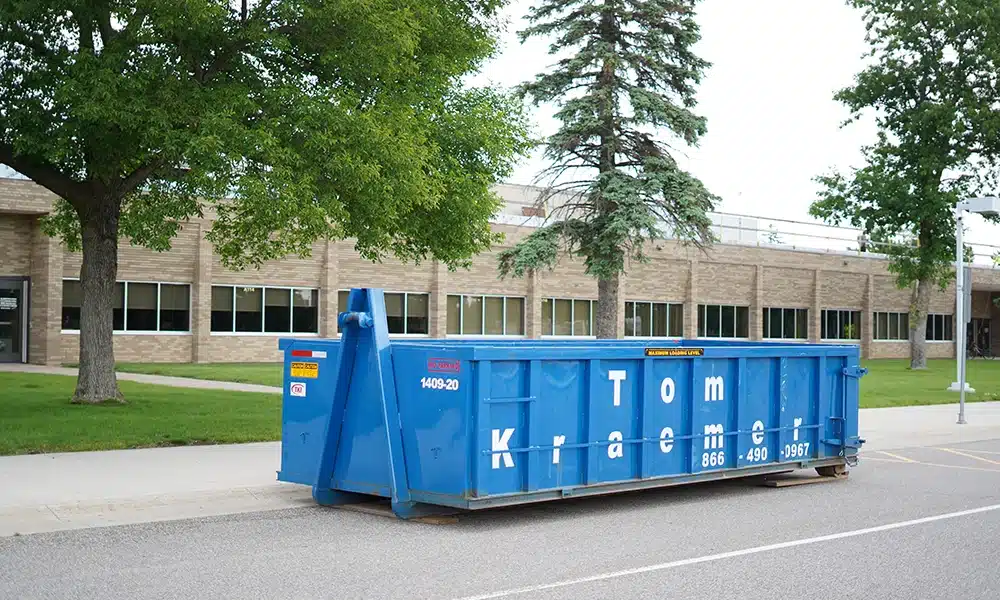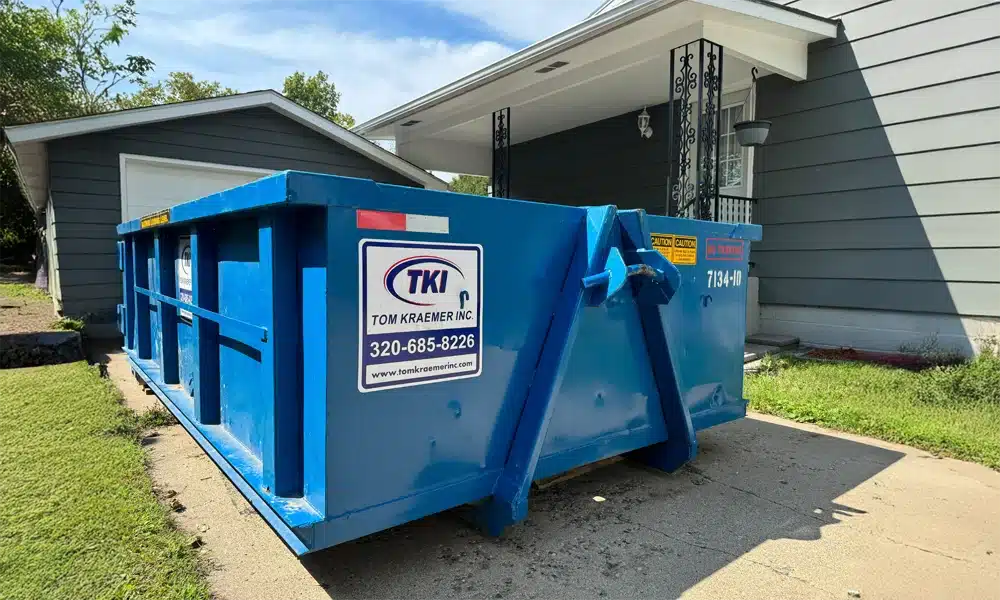When you’re managing a construction project or tackling a home renovation, waste adds up quickly. Many people struggle with choosing the right dumpster size, understanding weight limits, and following disposal rules, all of which can lead to surprise costs and project delays.
The good news? With the right information, renting a roll-off dumpster can be simple and cost-effective. At Tom Kraemer Inc., we guide homeowners and contractors through every step, so you can stay focused on finishing your project, not worrying about waste.
In this article, you’ll learn how to choose the right size, manage fees, follow local regulations, and get the most out of your rental.
Table of Contents
- How Do You Choose the Right Dumpster Size?
- What Should You Know About Weight Limits and Fees?
- Where Can You Place a Dumpster and Do You Need a Permit?
- What Items Can and Cannot Go in a Dumpster?
- How Long Can You Keep a Dumpster Rental?
- How Can You Maximize Dumpster Efficiency?
- Ready to Rent the Right Dumpster?
- FAQs
How Do You Choose the Right Dumpster Size?
The first step is matching your dumpster to the type and amount of debris you’ll have. Renting too small means paying for extra hauls, while renting too large means paying for unused space.
For an in-depth look, see TKI’s guides:
As a quick reference:
- 10-yard: small remodels, garage cleanouts.
- 20-yard: medium renovations, flooring projects.
- 30-yard: large construction or demolition jobs.

What Should You Know About Weight Limits and Fees?
Every dumpster has a weight limit. If your debris exceeds it, you’ll face additional charges. Heavy materials like concrete, shingles, or soil can quickly add weight. Estimate debris in advance, and check with TKI to avoid surprises.
Where Can You Place a Dumpster and Do You Need a Permit?
Choose a flat, accessible spot that won’t block traffic or project activity. Protect surfaces with plywood if placing on driveways or lawns.
If you plan to set your dumpster on public property, like a street, most cities require a permit. TKI can advise you on local regulations before delivery.
What Items Can and Cannot Go in a Dumpster?
Not everything can be tossed into a roll-off. Prohibited items often include:
- Hazardous chemicals
- Electronics
- Tires
- Paints or solvents
When in doubt, check with TKI. We’ll guide you to safe, compliant disposal options.
How Long Can You Keep a Dumpster Rental?
Rental periods vary based on your project. Standard rentals often cover a week, but extensions are available. Scheduling ahead ensures availability and avoids rushed pickups.
How Can You Maximize Dumpster Efficiency?
A little planning goes a long way:
- Distribute weight evenly to stay within limits.
- Break down bulky items before loading.
- Group debris by type for easier disposal.
These simple steps save time, prevent overages, and keep your site safer.
Ready to Rent the Right Dumpster?
From large-scale construction to small DIY cleanups, Minnesota projects run smoother when waste is managed properly. By choosing the right size, planning ahead, and following disposal rules, you’ll save time and money. With TKI’s expert guidance, renting a roll off dumpster becomes a straightforward, stress-free part of your project. Request a quote for renting a roll off dumpster today.
Frequently Asked Questions
How do I know which dumpster size is right for my project?
It depends on the scope. Small cleanouts often need 10 yards, while larger construction jobs may need 30 yards. TKI’s sizing guides can help.
Are there items I cannot put in a roll-off dumpster?
Yes. Commonly restricted items include hazardous waste, electronics, and tires. Always confirm with your provider.
Do I need a permit to place a dumpster on my property or street?
On private property, no. On streets or sidewalks, usually yes. Check your city’s requirements.
How far in advance should I book a dumpster rental?
It’s best to schedule at least a few days in advance to ensure the right size is available when you need it.

